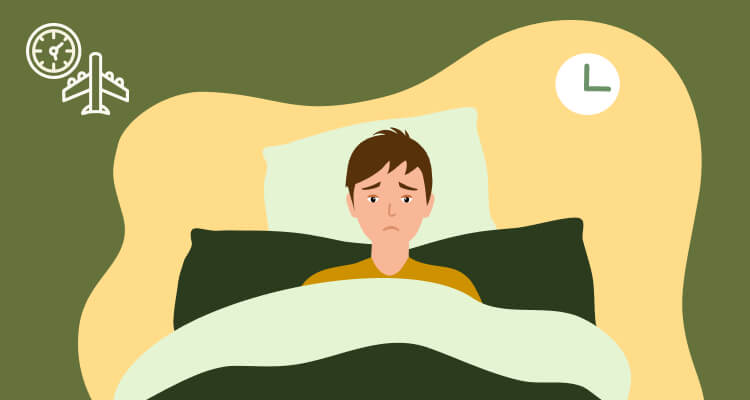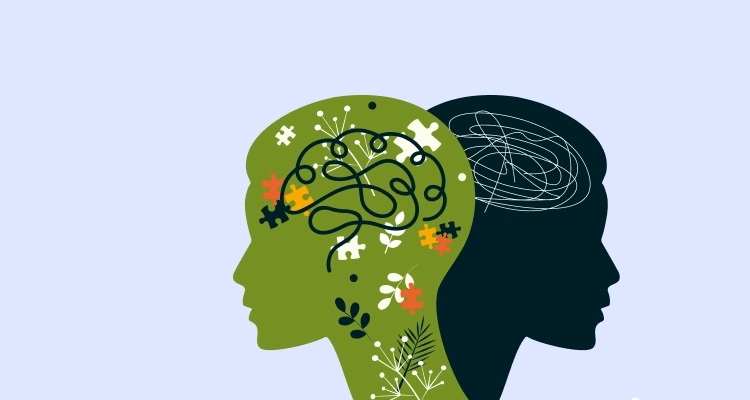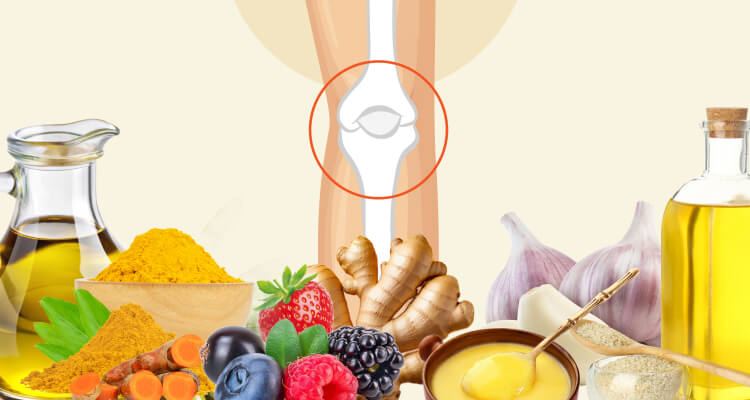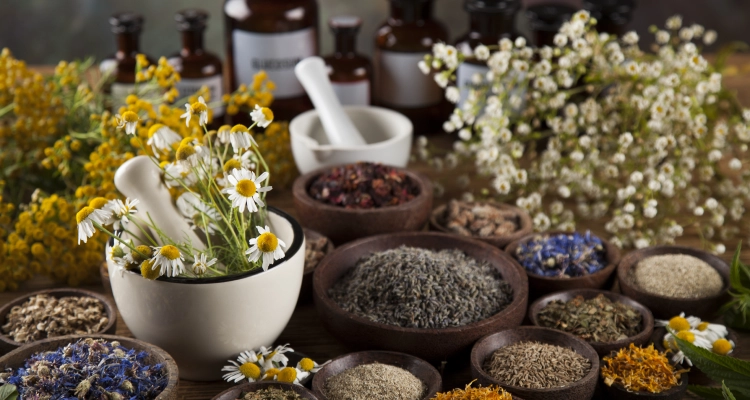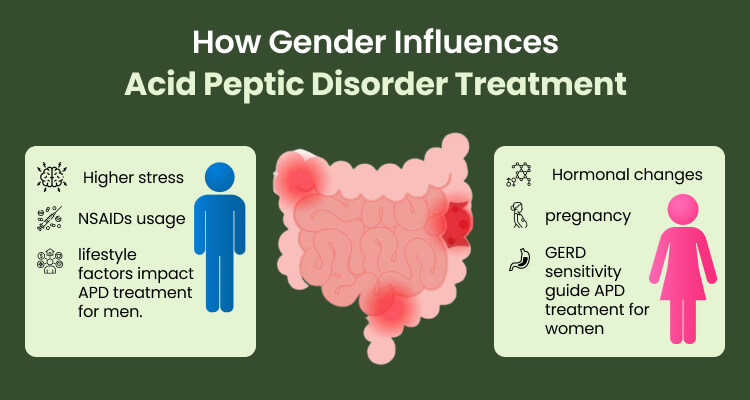When it comes to arthritis, plenty of misconceptions are floating around, which create confusion and spread misinformation. Despite being a prevalent condition that affects millions worldwide, many still harbor misunderstandings about its causes, symptoms, and treatment options.
Is it just an inevitable part of aging? Are there strict dietary restrictions? Can it be cured?
We’ll explore the most common myths surrounding arthritis and shed light on the truths behind them. By dispelling these myths, we can empower individuals to take informed steps toward managing their arthritis effectively. It’s time to clarify the misconceptions!
Myth #1: Arthritis Only Affects Older People.
Fact: Arthritis can affect individuals of all ages, including children.
While arthritis is more common in older adults, it’s crucial to understand that it can also affect the young. For instance, juvenile idiopathic arthritis (JIA) is one kind of arthritis that generally impacts children and teens under the age of 16. Kids with a family history of rheumatoid arthritis (RA) may face a higher likelihood of developing the condition than those without such a background. Although RA is uncommon in children, when it does manifest, it’s usually recognized as a type of juvenile idiopathic arthritis (JIA). In Ayurveda, maintaining balance in the body’s energetic forces (doshas) is essential for preventing arthritis. Encourage your children to partake in gentle yoga and mindful movement to maintain their joint health and flexibility.
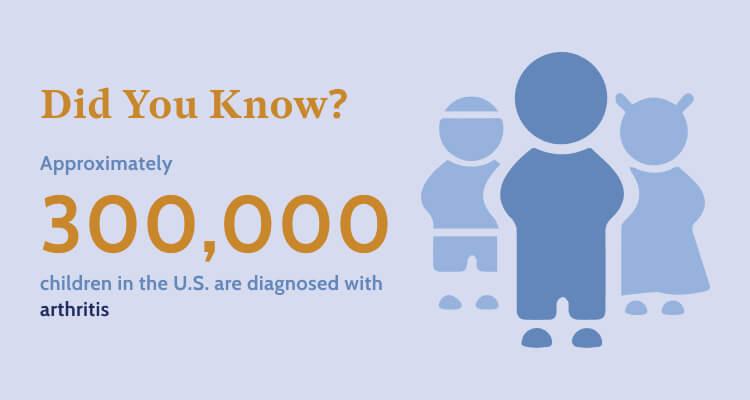
Myth #2: Arthritis is Just Joint Pain.
Fact: There are over 100 types of arthritis, many of which can impact areas beyond just the joints.
Many people mistakenly equate arthritis with mere joint pain. The term “arthritis” actually covers over 100 different conditions, some of which can affect organs and lead to systemic problems.
For example, rheumatoid arthritis (RA) not only affects the joints but can also involve the lungs, heart, and eyes. To manage systemic inflammation, Ayurveda suggests adding anti-inflammatory foods like turmeric and ginger to meals or consuming it as a tea to help reduce inflammation.
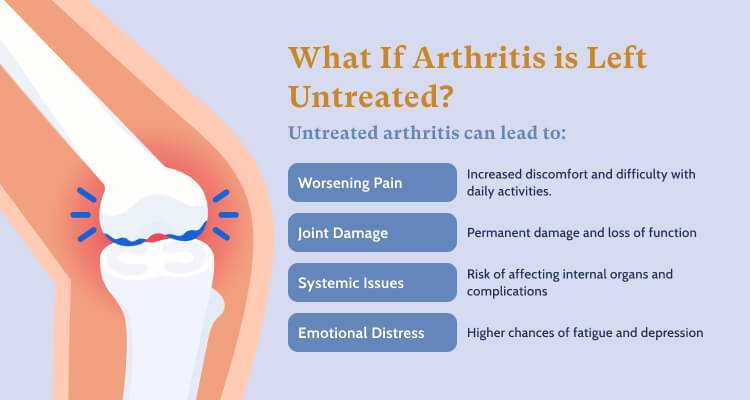
Myth #3: Cold Weather Causes Arthritis Pain.
Fact: Cold weather is not only the sole cause behind arthritis, but it can intensify symptoms for certain individuals.
The belief that cold weather directly causes arthritis is a common misconception. While it may not trigger arthritis, colder temperatures can increase stiffness and discomfort in individuals already affected by the condition. For example, many people with arthritis report that their symptoms worsen in the winter, possibly due to decreased physical activity and the body’s natural response to cold.
In colder months, it’s recommended to have warm, nourishing foods like soups and stews to help keep the body warm. Also, use warming spices like cumin and black pepper in your food to support circulation and help alleviate discomfort.
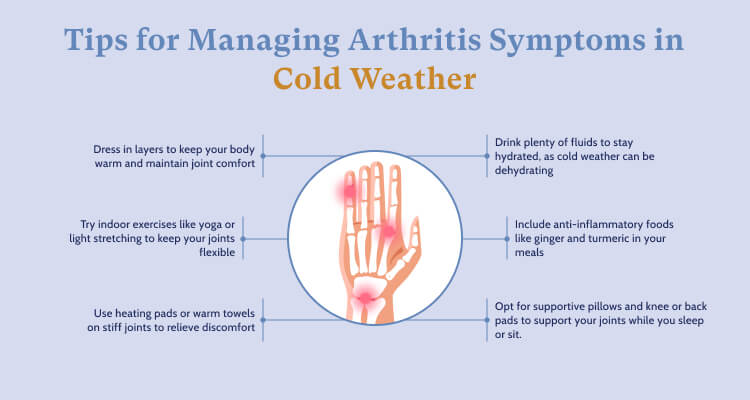
Myth #4: You Can’t Exercise with Arthritis.
Fact: Consistent exercise can improve flexibility, strength, and overall joint health.
Many people assume that exercising with arthritis will worsen their pain, but engaging in low-impact activities can improve joint function. Swimming, walking, and cycling help boost flexibility and strength without overloading the joints.
As per holistic science, gentle yoga and stretching can be particularly beneficial for those with arthritis. Certain poses, such as a child’s pose, can enhance flexibility and ease joint stiffness. While staying active is important, pushing through severe pain can lead to more damage and worsening symptoms. Always ensure to consult your healthcare provider before beginning any new exercise routine.
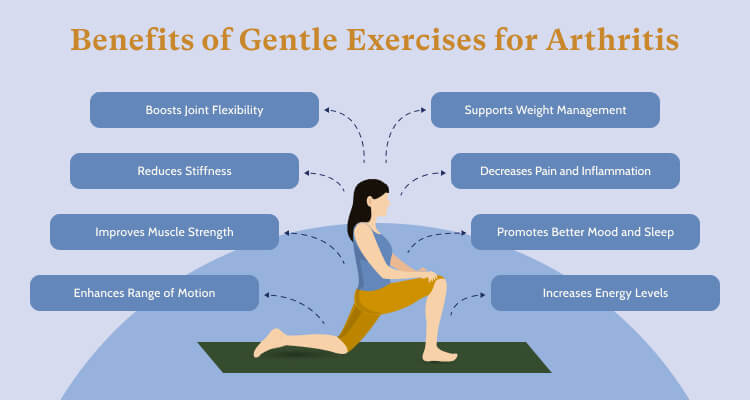
Myth #5: Diet Doesn’t Affect Arthritis.
Fact: Some specific foods have anti-inflammatory symptoms and can reduce pain.
While diet alone isn’t a cure, it can significantly influence arthritis management. Research indicates that foods rich in omega-3 fatty acids, such as fatty fish (salmon, mackerel) and walnuts, may help reduce joint pain and stiffness. Additionally, a Mediterranean diet rich in fruits, vegetables, whole grains, and healthy fats has been associated with lower levels of inflammation.
Incorporating foods that balance the energies, like leafy greens and seasonal vegetables, can also support overall health. Consider adding anti-inflammatory foods like garlic, ginger, and turmeric to your meals for their beneficial effects. Consult an Ayurvedic practitioner for personalized dietary guidance.

Myth #7: Arthritis is Inevitable with Age.
Fact: While the risk increases, many people maintain healthy joints as they age.
Aging does increase the likelihood of developing arthritis, but it’s not inevitable. Many individuals maintain healthy joints and an active lifestyle into their senior years. Genetics, diet, and activity level all have a major impact on joint health. Studies show that staying physically active and maintaining a healthy weight can help mitigate the risk of developing arthritis.
Regularly engaging in physical activities like walking or yoga can promote joint health. Additionally, staying hydrated and consuming foods that support joint health can make a significant difference as we age.
Myth #8: All Kinds of Arthritis are Similar.
Fact: Different types of arthritis have distinct causes, symptoms, and treatments.
Many people mistakenly believe that all types of arthritis are the same. Conditions like rheumatoid arthritis, osteoarthritis, and psoriatic arthritis require tailored approaches, as their effects and management differ significantly. For instance, osteoarthritis is characterized by the wear and tear of cartilage, while rheumatoid arthritis is an autoimmune disease that attacks the joints.
Understanding your specific type of arthritis can guide your dietary and lifestyle choices. For instance, those with inflammatory arthritis may benefit from cooling foods, while those with osteoarthritis may find relief through warming and nourishing diets.
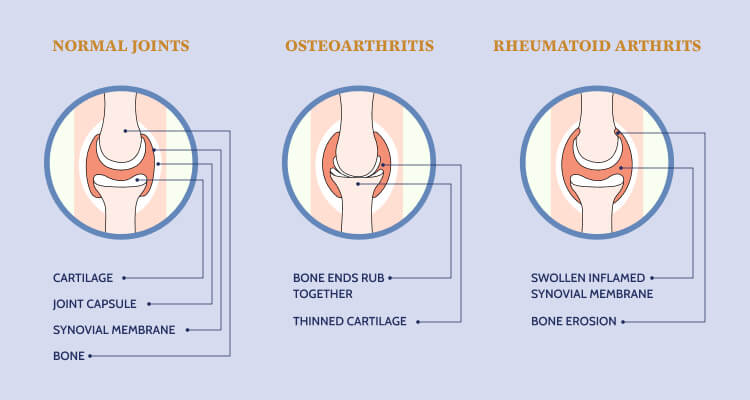
Myth #9: You Can’t Get Pregnant if You Have Arthritis.
Fact: Many people with arthritis can have healthy pregnancies when they receive the right care.
The notion that arthritis prevents pregnancy is false. With proper medical guidance and management of medications, many people with arthritis can conceive and have successful pregnancies. Women with arthritis may require adjustments to their treatment plans, but with the right support, they can navigate their pregnancies healthily.
Try to do preconception planning by following a balanced Ayurvedic diet and lifestyle by adding foods that nourish the body and mind. Consulting with both an obstetrician and an Ayurvedic practitioner can ensure a holistic approach to pregnancy care.
Myth #10: Painkillers are The Only Treatment You Need.
Fact: Effective arthritis management often requires a combination of treatments, including physical therapy and lifestyle changes.
While pain relief is crucial, it’s just one piece of the puzzle. A holistic approach that includes exercise, diet, and alternative therapies often leads to more sustainable management of arthritis symptoms. In many cases, addressing underlying factors through a multi-faceted approach is necessary for effective long-term relief.
Explore Ayurvedic therapies such as oil massage (abhyanga) to help alleviate pain and improve circulation. You can also try herbal remedies like Commiphora (guggul) or Vanda orchid (long pepper or Rasna) to support joint health and provide natural relief.
Myth #11: Only Obese People Get Arthritis.
Fact: People of all body types can develop arthritis; excess weight is just a risk factor.
While being overweight can increase the risk of certain types of arthritis, it’s not the sole determining factor. People of varying sizes can experience arthritis, underscoring the importance of awareness and prevention for everyone. Some individuals with a healthy weight may still be at risk due to genetic predisposition or previous injuries.
No matter your body type, keeping a balanced diet and staying active is key. Try mindful eating and find physical activities you enjoy—it’s a great way to support your joints and overall health.
Myth #12: Ayurveda is Incompatible with Modern Medicine.
Fact: Ayurveda can complement modern treatments for managing arthritis.
Some believe that Ayurveda and modern medicine don’t mix, but that’s not true. Many arthritis patients successfully incorporate Ayurvedic practices alongside conventional treatments for improved symptom management. You can combine Ayurvedic dietary tips with your prescribed meds to boost your overall health and well-being. Just ensure to work with your healthcare providers to keep everything in sync. Adding in practices like yoga and meditation can also be super helpful—they reduce stress and promote relaxation, which can really make a difference in managing arthritis symptoms.
Myth #13: Ayurvedic Treatment Doesn’t Work for Chronic Arthritis.
Fact: Panchakarma, a key Ayurvedic therapy, can be effective for managing chronic arthritis.
Some people doubt whether Ayurveda can help with chronic conditions, but research shows that therapies like panchakarma can ease symptoms and improve the quality of life for arthritis patients. These detox treatments go beyond just surface relief—they address the root causes of inflammation and pain. If you’re thinking about Ayurveda, consider trying panchakarma with guidance from a qualified practitioner, who can customize the treatment to suit your needs.

Myth #14: Ayurvedic Medicines Cause Dependency in Arthritis Patients
Fact: Ayurvedic medicines are generally safe and not addictive with proper use.
People often worry about becoming dependent on Ayurvedic medicines, but when used properly, these treatments can offer relief without causing dependency. Many Ayurvedic remedies are natural and can work alongside conventional treatments.
Always consult a qualified Ayurvedic practitioner before trying any new treatments. They’ll guide you on safe use and make sure the treatments fit with your overall health plan.
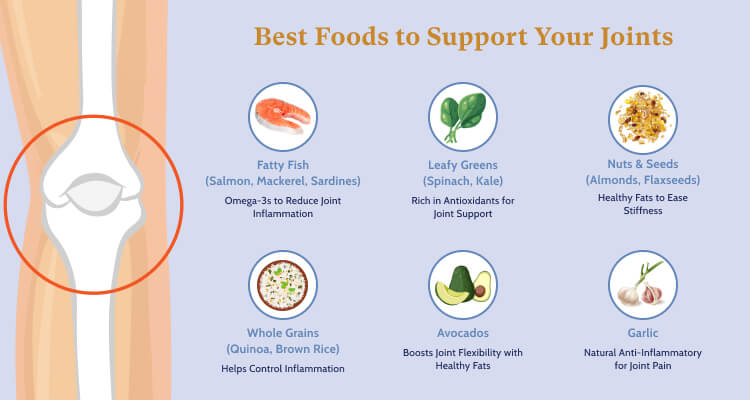
Myth#15: Joint Pain is Always Due to Arthritis.
Fact: Joint pain can result from various causes, including injuries, tendinitis, bursitis, infections, and other conditions, not just arthritis.
When you experience joint pain, it’s common to think it’s arthritis, but that’s not always true, any injury could also be the reason. Conditions like tendonitis, which implies inflammation of the tendons, or bursitis, which affects the fluid-filled sacs around joints, can also lead to discomfort. Even infections can lead to joint pain, so getting an accurate diagnosis is essential.
In Ayurveda, the first step to managing joint pain is identifying the root cause. Applying herbal oils regularly can help ease pain from inflammation or injury, providing relief without relying on medication.
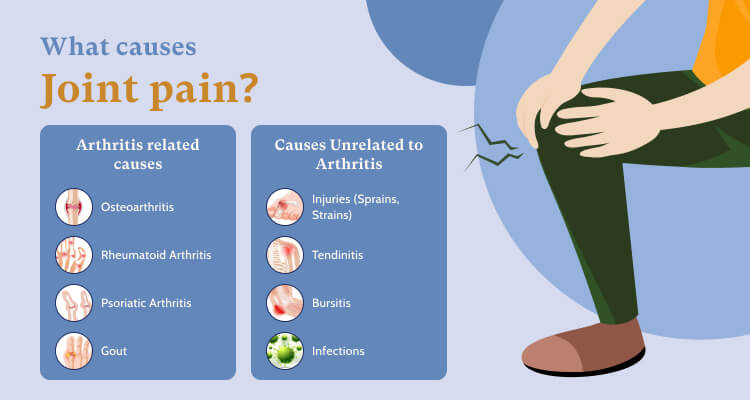
Ready to Take Charge of Your Arthritis Journey?
Now that we’ve debunked some of the most common myths about arthritis, the next step is all about you. What steps can you take to manage your arthritis and take control of your health? It starts with understanding your body, exploring different treatment options, and making informed choices every step of the way.
In Ayurveda, the treatment of arthritis (Sandhigata Vata), focuses on balancing the doshas—specifically reducing the aggravated Vata dosha while increasing the Shleshaka Kapha in the joints.
Since arthritis is often a degenerative condition that can persist throughout life, lifestyle changes and targeted treatments can significantly reduce symptoms. By addressing the root causes of the disorder, Ayurveda aims to stop the progression of arthritis in its early stages, allowing individuals to maintain a good quality of life. Integrating practices, such as dietary adjustments, herbal remedies, and gentle exercises like yoga can enhance joint health and overall well-being.
At LYBL, we believe that combining the best of both worlds—Ayurveda and modern healthcare—can provide a personalized, well-rounded approach to managing arthritis. Whether you’re starting small with a new exercise routine or looking to incorporate Ayurvedic therapies, LYBL is here to guide you through every stage of your wellness journey.
Take control today, and let us help you live your best life while managing arthritis.













